Congregation for the Doctrine of the Faith Collection (21 vols.)
Digital Verbum Edition
Overview
For nearly 500 years, the Congregation for the Doctrine of the Faith (CDF) has defended the Catholic Church from internal heresy—whether by false teaching or malpractice of faith. It is the oldest of the Curia’s nine congregations, and is made up of cardinals, bishops, priests, lay theologians, and canon lawyers. According to Pope Paul VI’s 1965 Motu Proprio Integrae Servandae, “All questions which regard the doctrine on faith and morals or which touch upon the faith are within the competence of the Congregation . . . It examines new teachings and new opinions in whatever way they are spread, it promotes studies in this area, and encourages the Congresses of scholars; it condemns those teachings found to be contrary to the principles of the faith, after, however, having heard the view of the Bishops of those regions, if they are specifically connected with the issues.”
This collection contains published documents and statements from the CDF going back to 1973. Dealing with matters involving the Sacraments of Penance and Marriage, and doctrines involving faith and morals, each of these documents is a living expression of the Church’s Sacred Tradition and Sacred Scripture working in tandem and in practice. See the latest developments of authoritative teaching from the Curia with this essential collection.
Logos makes studying the teachings of the Curia easier, smarter, and faster than ever before. Analyze these documents alongside the doctrinal and legal precedent they cite from canon law, Scripture, Vatican II, or encyclicals and dogmatic pronouncements from the past century. References from texts in your library appear on mouseover, and Logos remembers where you left off when you close the app, syncing your information across all devices.
Key Features
- Contains instructions, declarations, doctrinal responses, and pronouncements on teachings affecting Catholics worldwide
- Covers a myriad of issues affecting the beliefs and practices of Catholics
- Provides guidelines and regulations for examining and addressing doctrine
Individual Titles
- Note with Pastoral Recommendations for the Year of Faith
- Instruction Dignitas Personae on Certain Bioethical Questions
- Notification on the Works of Father Jon Sobrino S. J. Jesucristo liberador
- Notification on the Book Jesus Symbol of God by Father Roger Haight S. J.
- Letter to the Bishops of the Catholic Church on the Collaboration of Men and Women in the Church and in the World
- Considerations Regarding Proposals to Give Legal Recognition to Unions between Homosexual Persons
- Doctrinal Note on Some Questions Regarding the Participation of Catholics in Political Life
- Notification Regarding Certain Writings of Father Marciano Vidal
- Instruction on Prayer for Healing
- Dominus Iesus: Declaration on the Unicity and Salvific Universality of Jesus Christ and the Church
- Regulations for Doctrinal Examination
- Letter to the Bishops of the Catholic Church Concerning the Reception of Holy Communion by Divorced and Remarried Members of the Faithful
- Letter to the Bishops of the Catholic Church on Some Aspects of the Church Understood as Communion
- Instruction on the Ecclesial Vocation of the Theologian
- Instruction on Respect for Human Life in Its Origin and on the Dignity of Procreation
- Instruction on Certain Aspects of the “Theology of Liberation”
- Instruction on Infant Baptism
- Declaration on Euthanasia
- Letter on Certain Questions Concerning Eschatology
- Declaration on Certain Questions Concerning Sexual Ethics
- Declaration in Defence of the Catholic Doctrine on the Church against Certain Errors of the Present Day
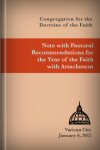
Note with Pastoral Recommendations for the Year of Faith
- Publisher: Libreria Editrice Vaticana
- Publication Date: 2012
- Pages: 64

Instruction Dignitas Personae on Certain Bioethical Questions
- Publisher: Libreria Editrice Vaticana
- Publication Date: 2008
- Pages: 36
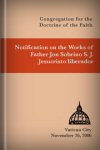
Notification on the Works of Father Jon Sobrino S. J. Jesucristo liberador
- Publisher: Libreria Editrice Vaticana
- Publication Date: 2007
- Pages: 24
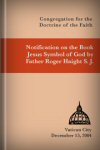
Notification on the Book Jesus Symbol of God by Father Roger Haight S. J.
- Publisher: Libreria Editrice Vaticana
- Publication Date: 2006
- Pages: 16
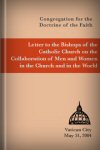
Letter to the Bishops of the Catholic Church on the Collaboration of Men and Women in the Church and in the World
- Publisher: Libreria Editrice Vaticana
- Publication Date: 2004
- Pages: 40
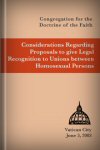
Considerations Regarding Proposals to Give Legal Recognition to Unions between Homosexual Persons
- Publisher: Libreria Editrice Vaticana
- Publication Date: 2003
- Pages: 16
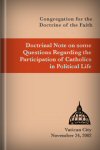
Doctrinal Note on Some Questions Regarding the Participation of Catholics in Political Life
- Publisher: Libreria Editrice Vaticana
- Publication Date: 2002
- Pages: 32
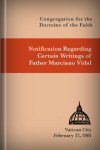
Notification Regarding Certain Writings of Father Marciano Vidal
- Publisher: Libreria Editrice Vaticana
- Publication Date: 2001
- Pages: 24
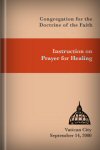
Dominus Iesus: Declaration on the Unicity and Salvific Universality of Jesus Christ and the Church
- Publisher: Libreria Editrice Vaticana
- Publication Date: 2000
- Pages: 47
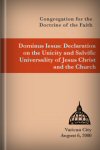
Instruction on Prayer for Healing
- Publisher: Libreria Editrice Vaticana
- Publication Date: 2000
- Pages: 20
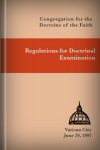
Regulations for Doctrinal Examination
- Publisher: Libreria Editrice Vaticana
- Publication Date: 1997
- Pages: 12

Letter to the Bishops of the Catholic Church Concerning the Reception of Holy Communion by Divorced and Remarried Members of the Faithful
- Publisher: Libreria Editrice Vaticana
- Publication Date: 1994
- Pages: 16
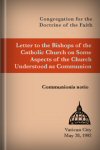
Letter to the Bishops of the Catholic Church on Some Aspects of the Church Understood as Communion (Communionis notio)
- Publisher: Libreria Editrice Vaticana
- Publication Date: 1992
- Pages: 10
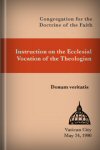
Instruction on the Ecclesial Vocation of the Theologian (Donum veritatis)
- Publisher: Libreria Editrice Vaticana
- Publication Date: 1990
- Pages: 48
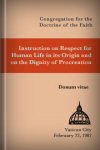
Instruction on Respect for Human Life in Its Origin and on the Dignity of Procreation (Donum vitae)
- Publisher: Libreria Editrice Vaticana
- Publication Date: 1987
- Pages: 42
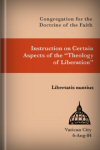
Instruction on Certain Aspects of the “Theology of Liberation” (Libertatis nuntius)
- Publisher: Libreria Editrice Vaticana
- Publication Date: 1984
- Pages: 36
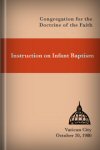
Declaration on Euthanasia (Iura bona)
- Publisher: Libreria Editrice Vaticana
- Publication Date: 1980
- Pages: 16

Instruction on Infant Baptism
- Publisher: Libreria Editrice Vaticana
- Publication Date: 1980
- Pages: 20
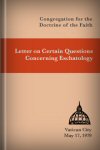
Letter on Certain Questions Concerning Eschatology
- Publisher: Libreria Editrice Vaticana
- Publication Date: 1979
- Pages: 10
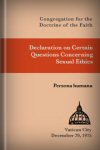
Declaration on Certain Questions Concerning Sexual Ethics (Persona humana)
- Publisher: Libreria Editrice Vaticana
- Publication Date: 1975
- Pages: 33

Declaration in Defence of the Catholic Doctrine on the Church against Certain Errors of the Present Day (Mysterium Ecclesiae)
- Publisher: Libreria Editrice Vaticana
- Publication Date: 1973
- Pages: 43
Product Details
- Title: Congregation for the Doctrine of the Faith Collection
- Author: Congregation for the Doctrine of the Faith
- Publisher: Libreria Editrice Vaticana
- Volumes: 21
- Pages: 601
About the Congregation for the Doctrine of the Faith
Founded in 1542 by Pope Paul III, the Congregation for the Doctrine of the Faith (CDF) is the oldest of the Curia’s nine congregations. Its mandate has been to investigate and address emergent doctrines, to determine measures to be taken against doctrinal error or malpractice of the Sacraments, and to safeguard the faith and morality of the people of the Catholic Church. It has four unique offices: the doctrinal office, the disciplinary office, the matrimonial office, and the office for the priesthood. Its advisory board consists of cardinals, bishops, priests, lay theologians, and canon lawyers.
Since 1968, the CDF has been headed by prefects. The Congregation is now headed by Gerhard Ludwig Müller. From 2005 to 2012 it was led by William Levada, and prior to that it was headed by Cardinal Joseph Ratzinger from 1981 to 2005. Prior to 1968, the prefect position of the CDF was symbolically held by the pope.
The Congregation for the Doctrine of the Faith oversees the Vatican Secret Archives and has been responsible for releasing content from that massive library, which has taken form in the shape in the publications of the Catholic Church and Modern Science series and the History of the Popes from the Close of the Middle Ages.
Key Features
- Contains instructions, declarations, doctrinal responses, and pronouncements on teachings affecting Catholics worldwide
- Covers a myriad of issues affecting the beliefs and practices of Catholics
- Provides guidelines and regulations for examining and addressing doctrine
Product Details
- Title: Congregation for the Doctrine of the Faith Collection
- Author: Congregation for the Doctrine of the Faith
- Publisher: Libreria Editrice Vaticana
- Volumes: 21
- Pages: 601
About the Congregation for the Doctrine of the Faith
Founded in 1542 by Pope Paul III, the Congregation for the Doctrine of the Faith (CDF) is the oldest of the Curia’s nine congregations. Its mandate has been to investigate and address emergent doctrines, to determine measures to be taken against doctrinal error or malpractice of the Sacraments, and to safeguard the faith and morality of the people of the Catholic Church. It has four unique offices: the doctrinal office, the disciplinary office, the matrimonial office, and the office for the priesthood. Its advisory board consists of cardinals, bishops, priests, lay theologians, and canon lawyers.
Since 1968, the CDF has been headed by prefects. The Congregation is now headed by Gerhard Ludwig Müller. From 2005 to 2012 it was led by William Levada, and prior to that it was headed by Cardinal Joseph Ratzinger from 1981 to 2005. Prior to 1968, the prefect position of the CDF was symbolically held by the pope.
The Congregation for the Doctrine of the Faith oversees the Vatican Secret Archives and has been responsible for releasing content from that massive library, which has taken form in the shape in the publications of the Catholic Church and Modern Science series and the History of the Popes from the Close of the Middle Ages.
Reviews
3 ratings
Kevin Simmons
6/24/2016
This set does not include the CDF's 1974 Declaration on Procured Abortion.Beh
1/29/2015

Deacon Tim Johnson
9/29/2014